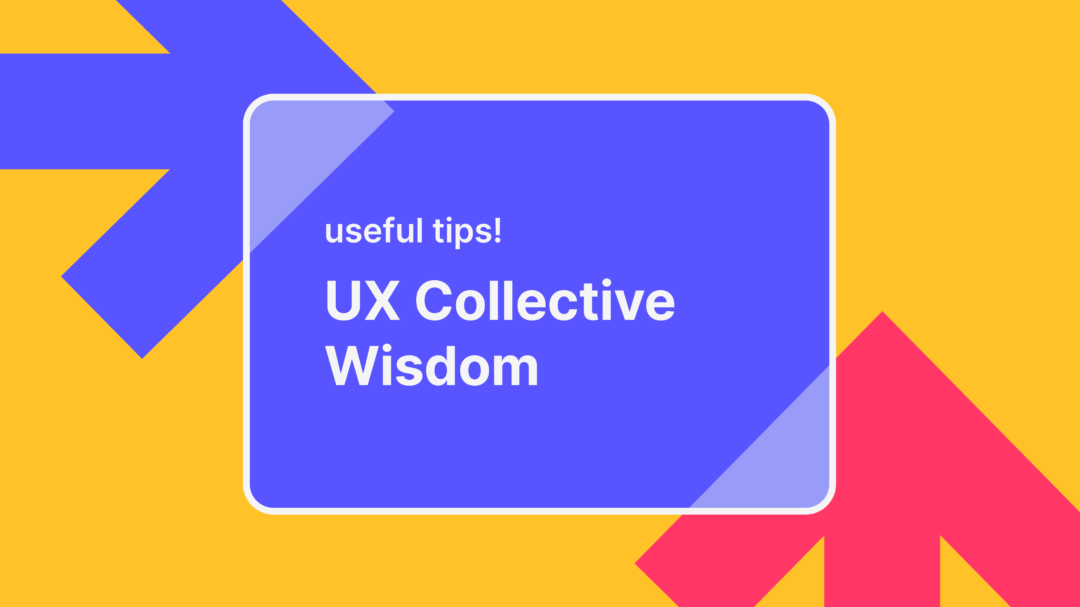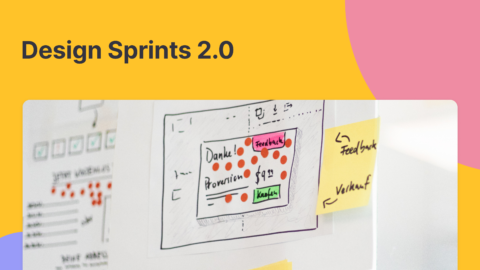We’ve been going through some weird times. The whole planet is in quarantine trying to fight COVID-19. It’s at these times, however, that we should take some time -we’ve got a lot of it- to reflect on how we have been working till now and maybe try to become not only better UX professionals but also better people.
Personally, since the very beginning of this “bloody” quarantine, I’ve set the goal to read at least 4 articles per day on my field. And it’s going well so far. To save you time spent searching and reading through various blog posts, articles, etc. I have made a list of the top 10+1 blog posts that you need to save on your bookmarks right now.
Let’s find out what these articles are all about. Below you may find the complete “table of contents” that describes what we will be covering. I tried to create numerous categories, instead of providing overlapped content to give you a more multifaceted perspective.
- Information processing
- UX Research future
- UX and SEO
- Design Fundamentals
- Mental Models
- UI killer tips
- Going beyond UX
- Ethical UX
- Being a team player
- Working remotely
- Design sprints (Virtual Edition)
Information processing
Summary: Given the abundance of information we receive every day, human brains find it difficult to catch up. Carlos proposes 5 tips on how to optimize our decision-making skills when found in an ocean of data. The first tip is about thinking from a higher perspective to a lower perspective so that it makes sense. He argues that your brain will likely understand the interconnection of the concepts at hand and will hopefully land better decisions. The second tip is about getting back to basics; that is, removing confusing terms or ambiguous concepts that make it difficult to see the source of a problem. The third tip is about questioning things that we take for granted in a quest to find new opportunities. The fourth tip is about finding similarities or interdependencies between concepts to better visualize their outcomes. Finally, Carlos’ last tip is about breaking a problem into smaller chunks to better respond to them.
Written by Carlos Yllobre, Workday.
Read the original article here.
UI killer tips
Summary: John, in his blog post, provides 10 tips for designing UIs. The first is to learn everything about your persona; that is needs, wants desires, etc. The second is to dig deeper into your users’ wants and needs by observing their behavior while interacting with your system. The third is to educate the user on what will happen if certain actions are taken from their side. The fourth is to be proactive and write the respective messages after speculating the users’ common mistakes. The fifth is to be interactive so as to create a sense of live responsiveness. The sixth is to be strategic when choosing the size of crucial UI elements (points of interaction). The seventh is to follow the general rules on UIs by keeping an eye on what other companies do (especially the big ones as they are the ones that “impose mental models”). The eighth is to create simple and intuitive designs to enhance memorability. The ninth is to accelerate your users’ decision-making by having simpler designs. The last one is to rely on data and watch your users’ actions carefully.
Written by John Moore Williams, Webflow
Read the original article here.
UX Research Future
Summary: Monty in his great article on Medium, stresses the importance of empathy in every product planning from ideation to development to delivery. He then suggests that we all (UX researchers) should adopt a more scientific approach in trying to create empathy and then go beyond that by including other stakeholders in a new modified collective research.
Written by Monty Hammontree, Microsoft
Read the original article here.
***Note: this article should be read by every UX researcher out there, especially by those that are just starting out their UX research career.
UX and SEO
Summary: SEO (or Search Engine Optimization) is no longer a concept that belongs exclusively to marketers. Tyler, in his article, stresses the need to plan your designs beforehand and iterate as needed to optimize your website or web app. In a nutshell, he argues that we should optimize navigation, reduce latency, employ SEO-friendly layouts, and be strategic in keyword selection.
Written by Tyler Tafelsky
Read the original article here.
On having a team mindset
Summary: Chris performs a deep self-assessment about his professional life and makes a good point of looking at the bigger impact our actions have while remaining humble. He also argues that having a team/group perspective is far more important than going solo thus being a good team player is way better than being a good player.
Written by Chriss kiess
Read the original article here.
Ethical UX
Summary: Danny Sapio in his very interesting, indeed, article advocates for adopting ethical UX practices that will keep the user on the “safe side” instead of trying to trick them. The list includes renewal alerts, supporting messages to enhance the users’ decision-making (even at the expense of your own interests), capitalizing on user experience instead of revenues, transparent pricing, spamming notifications, taking privacy concerns seriously, running honest discounts, and finally making it easy for users to cancel or deactivate accounts.
Written by Danny Sapio, Skookum
Read the original article here.
Working remotely
Summary: Eric, shares his little but very precious secrets on how to better cope with working from home. These secrets do not belong solely to UX pros so you might even share them with your partner (if they work in another field remotely). He recommends that we should treat our workspace as if it is a real workspace and behave accordingly, utilize the webcam to feel more connected with the team, and finally be disciplined in eliminating both the “noise” and the excessive food intake.
Written by Eric Chung, IBM
Read the original article here.
On mental models
Summary: Shailly talks about a very important concept: the “mental models”. She defines conceptual models (how designers want the end-users to behave) and mental models (how users actually behave based on their past experiences with similar systems). She then continues to stress the importance of eliminating the gap between the aforementioned models and suggests 3 potential ways of how to tackle this. The first is to follow the general rules of other popular websites, the second is to create intuitive UIs and the third is to perform card sorting exercises.
Written by Shailly Kishtawal, Flipkart
Read the original article here.
Going beyond UX
Summary: Aryan, in his novel, ehm sorry article (it’s really that great), narrates his own story, and how he realized that UX is much more than just functional. He then goes on to explain how designs, in order to delight, have to serve 3 spheres which are a) visceral (how one feels about a product), b) behavioral (what one wants to achieve using a product) and c) reflective (how one wants to appear to others when using the product).
Written by Aryan Indraksh, Expedia
Read the original article here.
Design fundamentals
Summary: It’s all about getting back to basics. Michelle, in her beginner-friendly article, shares some fundamental concepts prior to engaging with any design. She talks about the grid systems that assist in building consistency, alignment, balance, and an overall tidy environment on your page to start off right. She also talks about the color palette and how to come up with one (she also suggests that we use the 60%/30%/10% rule for our “dominant, secondary, and accent colors respectively”. She finally talks about the art of typography and its important role in our designs (she also suggests that we use the “Golden Mean (1:1.618)” or the “Perfect Fourth (2:3)” to increase our website’s aesthetics.
Written by Michelle Chiu, MongoDB
Read the original article here.
Virtual design sprints
Summary: In this amazing interview (if you haven’t read it yet, do so now), Robert talks about his passion, “Virtual design sprints”. He states that they are very flexible, although they need a lot of experimentation and testing before finalizing them, and shares some key details for how they should be better performed.
Written by Evan Mintzioris, Useberry
(Interview with Robert Skrobe)
Read the original article here.
Feel free to contact us!
We’d love to know your experience with Useberry and we will be excited to hear your thoughts and ideas.




